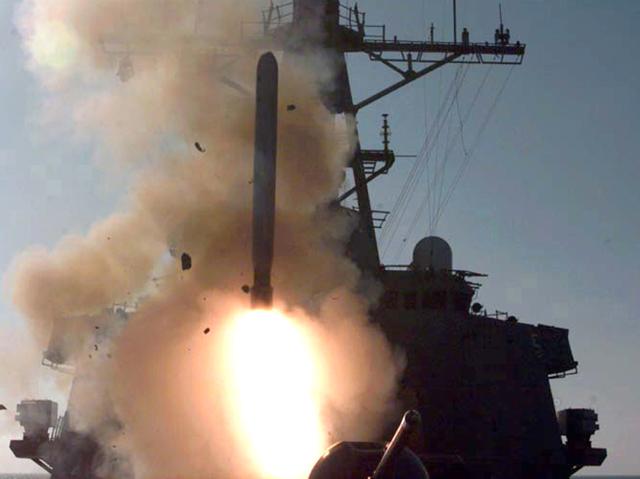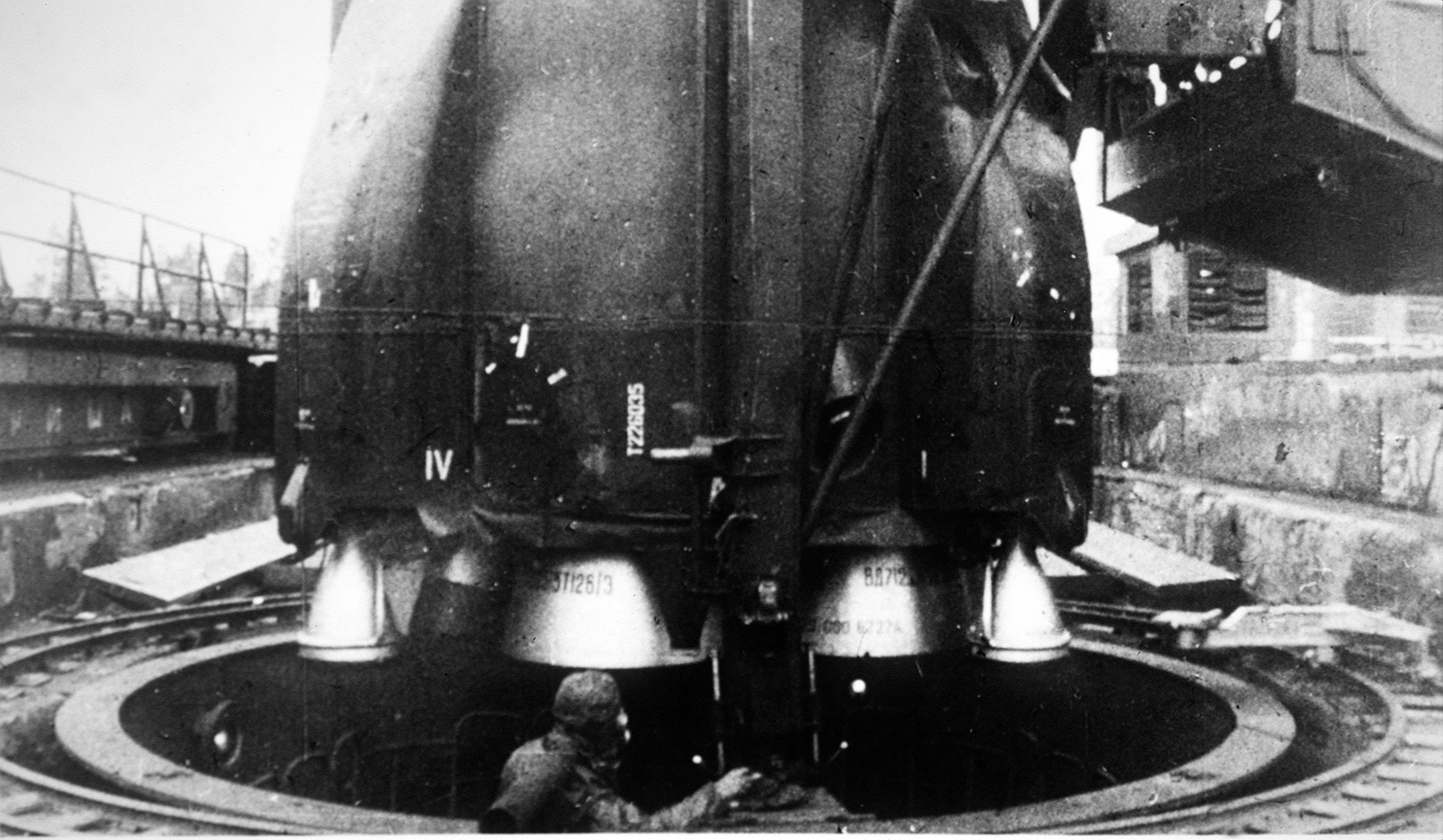|
START II
START II (Strategic Arms Reduction Treaty) was a bilateral treaty between the United States and Russia on the Reduction and Limitation of Strategic Offensive Arms. It was signed by US President George H. W. Bush and Russian President Boris Yeltsin on 3 January 1993, banning the use of multiple independently targetable re-entry vehicles (MIRVs) on intercontinental ballistic missiles (ICBMs). Hence, it is often cited as the De-MIRV-ing Agreement. It was ratified by the US Senate on 26 January 1996 with a vote of 87–4. Russia ratified START II on 14 April 2000, making it conditional on preserving the ABM Treaty. When the US withdrew from the ABM Treaty on June 13, 2002, Russia withdrew from START II one day later. Thus, START II never entered into effect. Instead, SORT came into effect, which reduced the strategic warheads count per country to 1,700–2,200. Impact of MIRV ICBMs using MIRVs are considered destabilizing because they put a premium on a first strike. These mi ... [...More Info...] [...Related Items...] OR: [Wikipedia] [Google] [Baidu] |
George H
George may refer to: People * George (given name) * George (surname) * George (singer), American-Canadian singer George Nozuka, known by the mononym George * George Washington, First President of the United States * George W. Bush, 43rd President of the United States * George H. W. Bush, 41st President of the United States * George V, King of Great Britain, Ireland, the British Dominions and Emperor of India from 1910-1936 * George VI, King of Great Britain, Ireland, the British Dominions and Emperor of India from 1936-1952 * Prince George of Wales * George Papagheorghe also known as Jorge / GEØRGE * George, stage name of Giorgio Moroder * George Harrison, an English musician and singer-songwriter Places South Africa * George, Western Cape ** George Airport United States * George, Iowa * George, Missouri * George, Washington * George County, Mississippi * George Air Force Base, a former U.S. Air Force base located in California Characters * George (Peppa Pig), a 2- ... [...More Info...] [...Related Items...] OR: [Wikipedia] [Google] [Baidu] |
ABM Treaty
The Anti-Ballistic Missile Treaty (ABM Treaty or ABMT) (1972–2002) was an arms control treaty between the United States and the Soviet Union on the limitation of the anti-ballistic missile (ABM) systems used in defending areas against ballistic missile-delivered nuclear weapons. It was intended to reduce pressures to build more nuclear weapons to maintain deterrence. Under the terms of the treaty, each party was limited to two ABM complexes, each of which was to be limited to 100 anti-ballistic missiles. Signed in 1972, it was in force for the next 30 years. In 1997, five years after the dissolution of the Soviet Union, four former Soviet republics agreed with the United States to succeed the USSR's role in the treaty. In June 2002 the United States withdrew from the treaty, leading to its termination, citing risks of nuclear blackmail. Background Throughout the late 1950s and into the 1960s, the United States and the Soviet Union had been developing missile systems wit ... [...More Info...] [...Related Items...] OR: [Wikipedia] [Google] [Baidu] |
Jesse Helms
Jesse Alexander Helms Jr. (October 18, 1921 – July 4, 2008) was an American politician. A leader in the conservative movement, he served as a senator from North Carolina from 1973 to 2003. As chairman of the Senate Foreign Relations Committee from 1995 to 2001, he had a major voice in foreign policy. Helms helped organize and fund the conservative resurgence in the 1970s, focusing on Ronald Reagan's quest for the White House as well as helping many local and regional candidates. On domestic social issues, Helms opposed civil rights, disability rights, environmentalism, feminism, gay rights, affirmative action, access to abortions, the Religious Freedom Restoration Act (RFRA), and the National Endowment for the Arts. Helms brought an "aggressiveness" to his conservatism, as in his rhetoric against homosexuality. '' The Almanac of American Politics'' once wrote that "no American politician is more controversial, beloved in some quarters and hated in others, than Jesse Hel ... [...More Info...] [...Related Items...] OR: [Wikipedia] [Google] [Baidu] |
Anti-ballistic Missile
An anti-ballistic missile (ABM) is a surface-to-air missile designed to counter ballistic missiles (missile defense). Ballistic missiles are used to deliver nuclear, chemical, biological, or conventional warheads in a ballistic flight trajectory. The term "anti-ballistic missile" is a generic term conveying a system designed to intercept and destroy any type of ballistic threat; however, it is commonly used for systems specifically designed to counter intercontinental ballistic missiles (ICBMs). Current counter-ICBM systems There are a limited number of systems worldwide that can intercept intercontinental ballistic missiles: * The Russian A-135 anti-ballistic missile system (renamed in 2017 to A-235) is used for the defense of Moscow. It became operational in 1995 and was preceded by the A-35 anti-ballistic missile system. The system uses Gorgon and Gazelle missiles previously armed with nuclear warheads. These missiles have been updated (2017) and use non-nuclear ... [...More Info...] [...Related Items...] OR: [Wikipedia] [Google] [Baidu] |
Addendum
An addendum or appendix, in general, is an addition required to be made to a document by its author subsequent to its printing or publication. It comes from the gerundive , plural , "that which is to be added," from (, compare with memorandum, agenda, corrigenda). Specific uses In books An addendum may explain inconsistencies or expand the existing work or otherwise explain or update the information found in the main work, especially if any such problems were detected too late to correct the main work. For example, the main work could have had already been printed and the cost of destroying the batch and reprinting it deemed too high. As such, addenda may come in many forms—a separate letter included with the work, text files on a digital medium, or any similar carrier. It may serve to notify the reader of errors present, as errata. In contracts and other legal documents In other documents, most importantly in legal contracts, an addendum is an additional document not i ... [...More Info...] [...Related Items...] OR: [Wikipedia] [Google] [Baidu] |
Eastern Europe
Eastern Europe is a subregion of the European continent. As a largely ambiguous term, it has a wide range of geopolitical, geographical, ethnic, cultural, and socio-economic connotations. The vast majority of the region is covered by Russia, which spans roughly 40% of the continent's landmass while accounting for approximately 15% of its total population."The Balkans" , ''Global Perspectives: A Remote Sensing and World Issues Site''. Wheeling Jesuit University/Center for Educational Technologies, 1999–2002. It represents a significant part of European culture; the main socio-cultural characteristics of Eastern Europe have historically been defined by the traditions of |
Expansion Of NATO
NATO is a military alliance of twenty-eight European and two North American countries that constitutes a system of collective defense. The process of joining the alliance is governed by Article 10 of the North Atlantic Treaty, which allows for the invitation of "other European States" only and by subsequent agreements. Countries wishing to join must meet certain requirements and complete a multi-step process involving political dialog and military integration. The accession process is overseen by the North Atlantic Council, NATO's governing body. NATO was formed in 1949 with twelve founding members and has added new members eight times. The first additions were Greece and Turkey in 1952. In May 1955, West Germany joined NATO, which was one of the conditions agreed to as part of the end of the country's occupation by France, the United Kingdom, and the United States, prompting the Soviet Union to form their own collective security alliance (commonly called the Warsaw Pact) ... [...More Info...] [...Related Items...] OR: [Wikipedia] [Google] [Baidu] |
Kosovo War
The Kosovo War was an armed conflict in Kosovo that started 28 February 1998 and lasted until 11 June 1999. It was fought by the forces of the Federal Republic of Yugoslavia (i.e. Serbia and Montenegro), which controlled Kosovo before the war, and the Kosovo Albanian rebel group known as the Kosovo Liberation Army (KLA). The conflict ended when the North Atlantic Treaty Organization (NATO) intervened by beginning air strikes in March 1999 which resulted in Yugoslav forces withdrawing from Kosovo. The KLA was formed in the early 1990s to fight against Serbian persecution of Kosovo Albanians, with the goal of uniting Kosovo into a Greater Albania. It initiated its first campaign in 1995 when it launched attacks against Serbian law enforcement in Kosovo. In June 1996, the group claimed responsibility for acts of sabotage targeting Kosovo police stations, during the Kosovo Insurgency. In 1997, the organisation acquired a large amount of arms through weapons smuggling from ... [...More Info...] [...Related Items...] OR: [Wikipedia] [Google] [Baidu] |
Bombing Of Iraq (1998)
The 1998 bombing of Iraq (code-named Operation Desert Fox) was a major four-day bombing campaign on Iraqi targets from 16 to 19 December 1998, by the United States and the United Kingdom. On 16 December 1998, President of the United States Bill Clinton announced that he had ordered strikes against Iraq. The contemporaneous justification for the strikes was Iraq's failure to comply with United Nations Security Council resolutions and its interference with United Nations Special Commission inspectors who were looking for weapons of mass destruction, The inspectors were sent back in 1997 and were repeatedly refused access to certain sites thus compelling the U.S to launch strikes. However, Clinton's decision was criticized and challenged by many key members of Congress, accusing Clinton of directing attention away from ongoing impeachment proceedings against him. The operation was a major flare-up in the Iraq disarmament crisis. The stated goal of the cruise missile and bombing a ... [...More Info...] [...Related Items...] OR: [Wikipedia] [Google] [Baidu] |
LGM-118 Peacekeeper
The LGM-118 Peacekeeper, originally known as the MX for "Missile, Experimental", was a MIRV-capable intercontinental ballistic missile (ICBM) produced and deployed by the United States from 1985 to 2005. The missile could carry up to twelve Mark 21 reentry vehicles (although treaties limited its actual payload to 10), each armed with a 300-kiloton W87 warhead. Initial plans called for building and deploying 100 MX ICBMs, but budgetary concerns eliminated the final procurement; only 50 entered service. Disarmament treaties signed after the Peacekeeper's development led to its withdrawal from service in 2005. Studies on the underlying concept started in the 1960s. The idea was to allow the U.S. to absorb a sneak attack by the USSR with enough warheads surviving to attack the remaining Soviet missile silos. To do so, the missiles had to be highly accurate, be based in such a way that enough would survive a nuclear attack, carry a large number of warheads so the survivors would st ... [...More Info...] [...Related Items...] OR: [Wikipedia] [Google] [Baidu] |
R-36 (missile)
The R-36 (russian: Р-36) is a family of intercontinental ballistic missiles (ICBMs) and space launch vehicles (Tsyklon) designed by the Soviet Union during the Cold War. The original R-36 was deployed under the GRAU index 8K67 and was given the NATO reporting name SS-9 Scarp. It was able to carry three warheads and was the first Soviet MRV ( multiple re-entry vehicle) missile. The later version, the R-36M was produced under the GRAU designations 15A14 and 15A18 and was given the NATO reporting name SS-18 Satan. This missile was viewed by certain United States analysts as giving the Soviet Union first strike advantage over the U.S., particularly because of its rapid silo-reload ability, very heavy throw weight and extremely large number of re-entry vehicles. Some versions of the R-36M were deployed with 10 warheads and up to 40 penetration aids and the missile's high throw-weight made it theoretically capable of carrying more warheads or penetration aids. Contemporary U.S ... [...More Info...] [...Related Items...] OR: [Wikipedia] [Google] [Baidu] |
Pre-emptive Nuclear Strike
In nuclear strategy, a first strike or preemptive strike is a preemptive surprise attack employing overwhelming force. First strike capability is a country's ability to defeat another nuclear power by destroying its arsenal to the point where the attacking country can survive the weakened retaliation while the opposing side is left unable to continue war. The preferred methodology is to attack the opponent's strategic nuclear weapon facilities (missile silos, submarine bases, bomber airfields), command and control sites, and storage depots first. The strategy is called counterforce. Overview During the Cold War period, both superpowers, NATO and the Eastern Bloc, built massive nuclear arsenals, aimed, to a large extent, at each other. However, they were never used, as after a time, leaders on both sides of the Iron Curtain realized that global thermonuclear war would not be in either power's interest, as it would probably lead to the destruction of both sides, and possibly ... [...More Info...] [...Related Items...] OR: [Wikipedia] [Google] [Baidu] |






